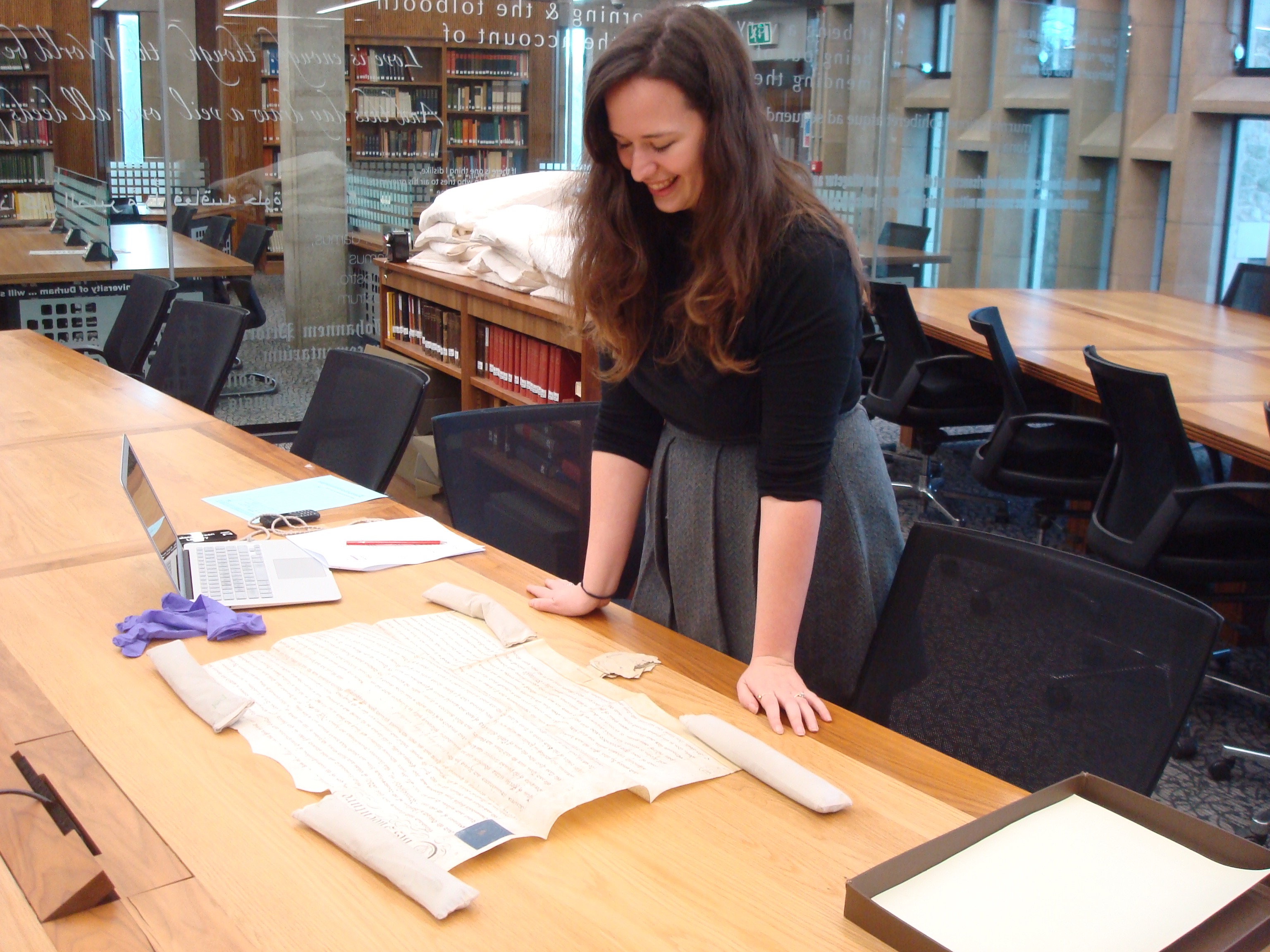Oh, the Places You’ll Go! …For Research
The archival trail is in many ways a detective story. At Winterthur, students spend much of their second-year unraveling hints and weaving together threads of objects’ pasts for our thesis projects. We begin at the end of our first year by asking a simple question around a topic that interests us. Soon, however, we find that the objects often have a story of their own that they want to tell and, as researchers, we must honor that story and follow it. In doing so, the class of 2017 has found themselves in places as far away as museums in Sweden, and as nearby as our own library at Winterthur.
Michelle Fitzgerald, examining eighteenth-century deeds at the Barker Research Library, Palace Green Library in Durham University.
For my thesis, I am tracking down the life of an Englishman who briefly lived in Annapolis, MD, and how he furnished his colonial home over two hundred years ago. I soon found that archives in the United States and resources available on the Internet could not hold all the answers I needed. This past January, with the support of a grant from the Center for Material Culture Studies at the University of Delaware, I took my research overseas to archives and collections around Britain. From Surrey and London all the way north to the city of Durham, I found myself looking at documents of literally all shapes and sizes, some of which had not been opened since the eighteenth century.
Bundles of eighteenth-century court record. National Archives, UK.
Surviving architecture and furnishings help to inform old documents, and any Winterthur fellow will admit that there is nothing comparable to studying and handling objects in person. Therefore, a considerable part of our thesis research involves travel to see objects, make observations, and raise new questions. For me, a current college dormitory in Durham held a key to the background of my thesis topic. Small remnants of original plasterwork from the Georgian building were visual clues of a fashionable town house, not always recorded in detail in archival record.
A Georgian town house in Durham now serves as college dormitories. Despite these changes, the building does hold some clues to its interior past. In turn, these hints work alongside documents to piece together the circumstances that shaped a person’s life and possessions.
So, why the effort? Documents and objects, hidden in corners of archives and private collections all over the world, provide us with the means to get closer to learning the whole story and give voice to narratives not always told in history. As material culturists, we often end up looking for the human story in the objects they used, made, or owned. By piecing together the background of these objects’ lives through what remains, we can hope to craft a fuller and more empathetic story for our reader, listener, or museum-goer. In turn, we hope they will leave carrying some sense of this empathy, or feeling for the story, that will make them look at their own world in a new way. Through the words and objects of the past, we cannot help the dead, but we can inspire the living to help each other.
By Michelle Fitzgerald, WPAMC Class of 2017




Leave a Reply